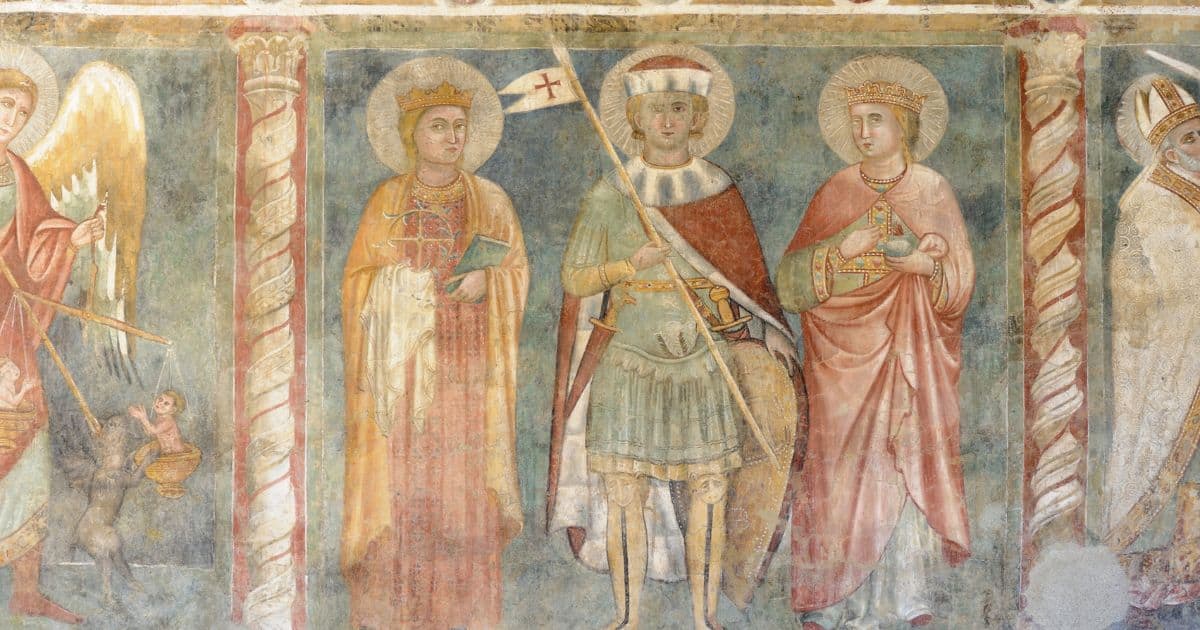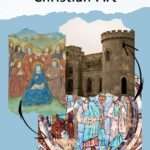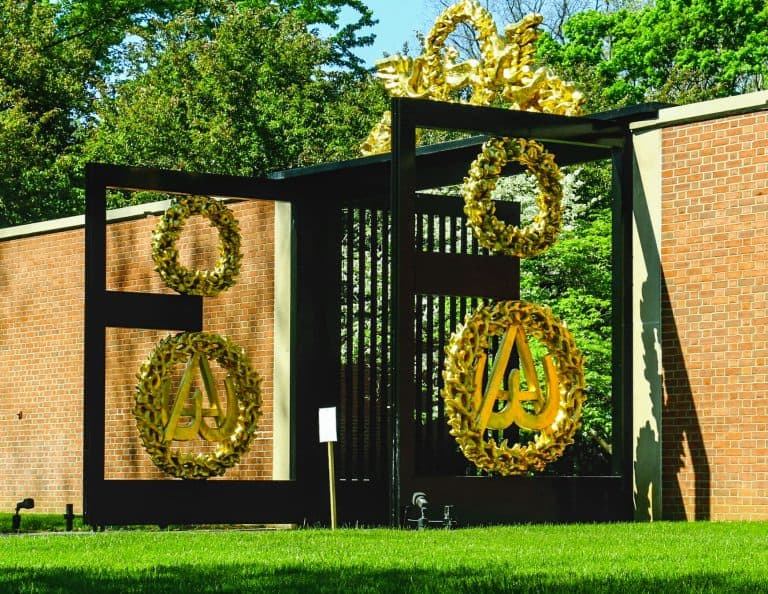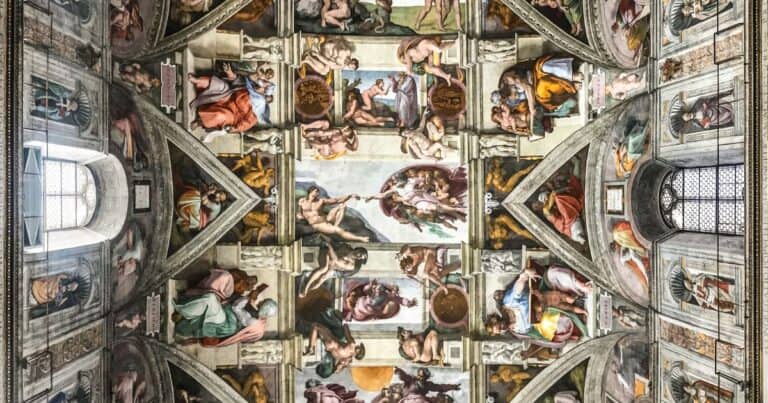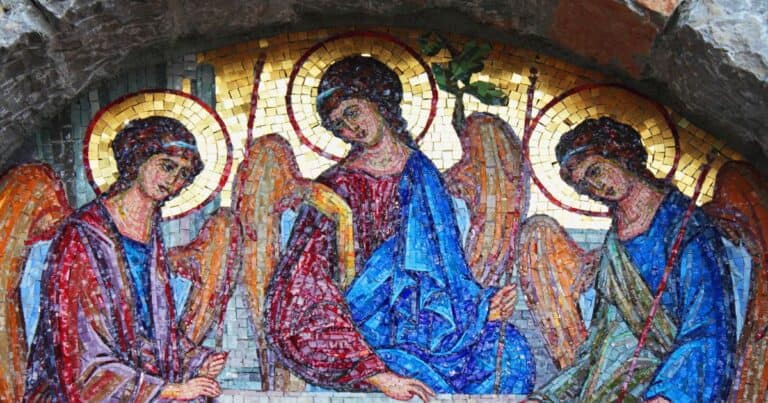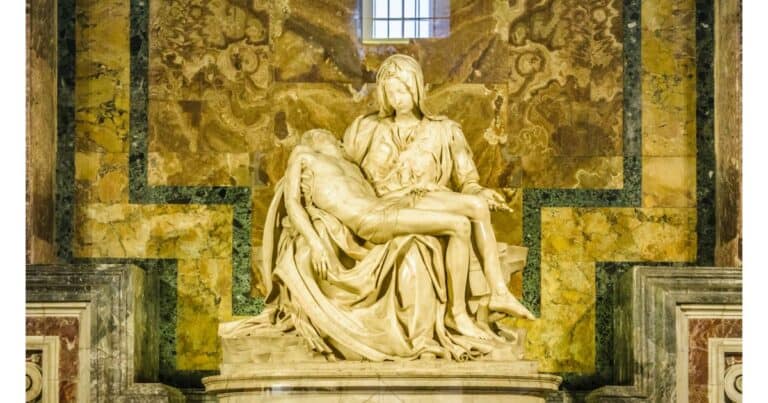The Tapestry of Faith: Exploring the Rich History of Medieval Christian Art
By Teresa Trumbly Lamsam, Ph.D.
I still remember the first time I stepped into the Cologne Cathedral, my eyes wide with awe. The air was cool and slightly damp, carrying the scent of centuries-old stone and the faintest hint of incense. As my eyes adjusted to the dimly lit interior, I was greeted by the towering forms of stone pillars, reaching up to the heavens like the hands of giants. And that nave! It was so long! My first encounter with the world of medieval Christian art left a lasting impression.
My passion for historic churches sparked an interest that has lasted decades and eventually led me to start Americana Steeples, an online space where I invite others to join me to explore the wonder of sacred places, people, and the stories they tell.
Medieval Christian art is a journey through time, a visual narrative that begins with the fall of the Roman Empire and spans over a thousand years of history. It’s a story of faith, devotion, and the human desire to create beauty in a world marked by hardship and uncertainty.
As we delve into this fascinating world, we’ll explore the birth and evolution of medieval Christian art, its iconic styles, and its role in society. So, let’s step into the past and uncover the stories hidden within the brushstrokes and chisel marks of medieval Christian art.
The Birth of Medieval Christian Art
The origin of medieval Christian art is a tale of two worlds. It’s a story that unfolds as the Roman Empire crumbles and Christianity begins to rise. This art form, born in a time of great change, would grow to leave a lasting impact on the world.
The Fall of the Roman Empire and the Rise of Christianity
In the waning years of the Roman Empire, a new faith was taking root. Christianity, born in Bethlehem, was spreading across Europe. It was during this time of transition that the first seeds of medieval Christian art were sown.
The early Christians used symbols to express their faith. Fish, lambs, and doves were among the signs they used to recognize each other. They etched these symbols into catacomb walls and painted them in manuscripts. Essentially, they put them anywhere they could.
According to a series of lectures[1] delivered in Scotland in 1885, symbols and painted or carved Bible stories could be found on:
- Walls and roofs — paintings and mosaics
- Pavements – mosaic, tile, and stone
- Doors – ornamented with carvings or metalwork
- Windows – stained glass
- Sculpted architecture – columns, capitals, arches
- Fittings – altars, pulpits, fonts, screens, furniture
- Shrines, chalices, crucifixes
The Influence of Byzantine Art
As the Roman Empire receded into the annals of history, the Byzantine Empire emerged in the East. With its capital in Constantinople (now Istanbul), it became a hub of culture and learning. Its art would significantly influence medieval Christian art. The Christian mosaics adorning the interior of Istanbul’s Hagia Sophia are some of the most exquisite examples of Byzantine art.
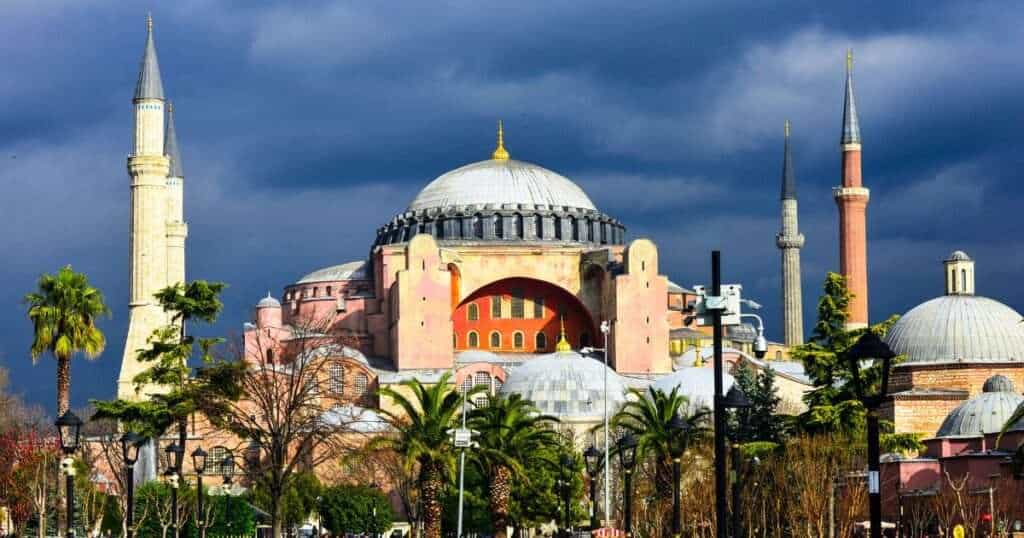
Byzantine art was a vibrant blend of color and gold. It was a realm where saints gazed from mosaics with a serene intensity. The Byzantines excelled in creating icons, crafting images of Christ, the Virgin Mary, and the saints that were revered as glimpses of the divine.
Under Constantine’s rule, the shackles on Christian art were lifted, and the emperor’s money flowed to Christians.[2] Holy structures were erected and artists, now free, painted, sculpted, and crafted mosaics that echoed their faith.
This influence seeped into the West, imbuing medieval Christian art with a mystical touch. The Byzantine’s use of color, their skill with mosaics, and their veneration for icons all found their way into the art of the medieval Christian world, shaping its evolution in profound ways.
Iconic Styles of Medieval Christian Art
Medieval Christian art is a tale of evolution, a journey marked by distinct periods of artistic expression. Two styles, Romanesque and Gothic, stand out in this narrative, each leaving its unique imprint on the canvas of history.
Romanesque Art
Romanesque art, prevalent from the 10th to the 12th centuries, was a testament to solidity and grandeur. This style was characterized by robust, rounded architecture, a nod to the Roman structures that inspired its name. Cathedrals rose, their thick walls punctuated by small windows. Inside, frescoes brought biblical tales to life, their vivid hues illuminating the dimly lit spaces.
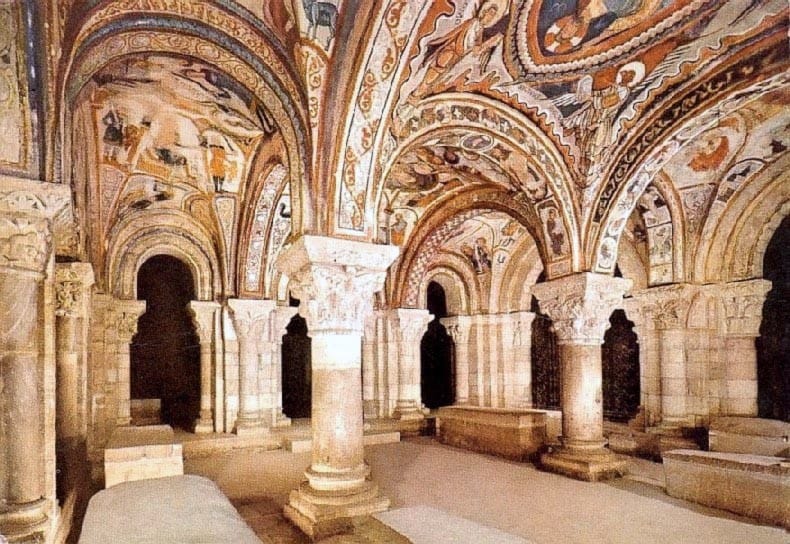
Gothic Art
As the Romanesque era faded, the Gothic period emerged, casting a long, intricate shadow over the world of medieval Christian art. Gothic art was a revolution, a stark contrast to its predecessor, and it was as if the world had suddenly shifted from prose to poetry.
Cathedrals, once robust and rounded, began to reach for the heavens. Their spires pierced the sky as though reaching out to Heaven. With their flying buttresses and ribbed vaults, these structures seemed to defy gravity. I would love to go back in time to talk to their creators!
But the stained-glass windows truly transformed these spaces, as they no doubt transformed the spiritual experiences of churchgoers – now and then.

Imagine in your mind’s eye: Sunlight, filtered through panels of colored glass, painted the air with a symphony of color. Blues, reds, and yellows danced across the stone floors, turning the austere interiors into ethereal landscapes. The art was intricate, filled with a depth of detail that invited the viewer to lose themselves in the narrative.
The Role of Art in Medieval Christian Society
In medieval Christian society, art was more than mere decoration. It was a language, a means of communication that transcended the barriers of literacy and social status. It was a tool for worship, a means of education, and a bridge between the physical and spiritual worlds.
Art was woven into the fabric of worship. The illuminated manuscripts held by the clergy, the frescoes that adorned the walls of the churches, the sculptures that stood in silent prayer – each was a testament to the faith of the artist and the community they served.
But art also served a more practical purpose. In a time when many were unable to read or write, images were a vital means of communication. The stories of the Bible were brought to life through the vivid scenes depicted in stained glass windows and the intricate carvings on church walls.
Art became a visual textbook, a way to educate the faithful and to ensure the teachings of Christianity were passed down through the generations.
The Legacy of Medieval Christian Art
The legacy of medieval Christian art is not confined to the past. Its influence echoes through the centuries, resonating in the heart of contemporary culture. This art form, born in an era of profound faith and dramatic social change, has left an indelible mark on the world.
The influence of medieval Christian art can be seen in modern art and architecture. The intricate patterns of Gothic cathedrals have found their way into contemporary design, evident in the vaulted ceilings and arches of structures like the Washington National Cathedral. The vibrant colors and rich symbolism of medieval paintings continue to inspire artists today, as seen in the works of Salvador Dali, who often incorporated religious symbolism into his surrealistic paintings.
Even in popular culture, the legacy of medieval Christian art endures. The epic narratives and intricate world-building found in fantasy literature and film, such as J.R.R. Tolkien’s “The Lord of the Rings” or George R.R. Martin’s “Game of Thrones,” echo the grandeur and complexity of medieval Christian art and architecture.
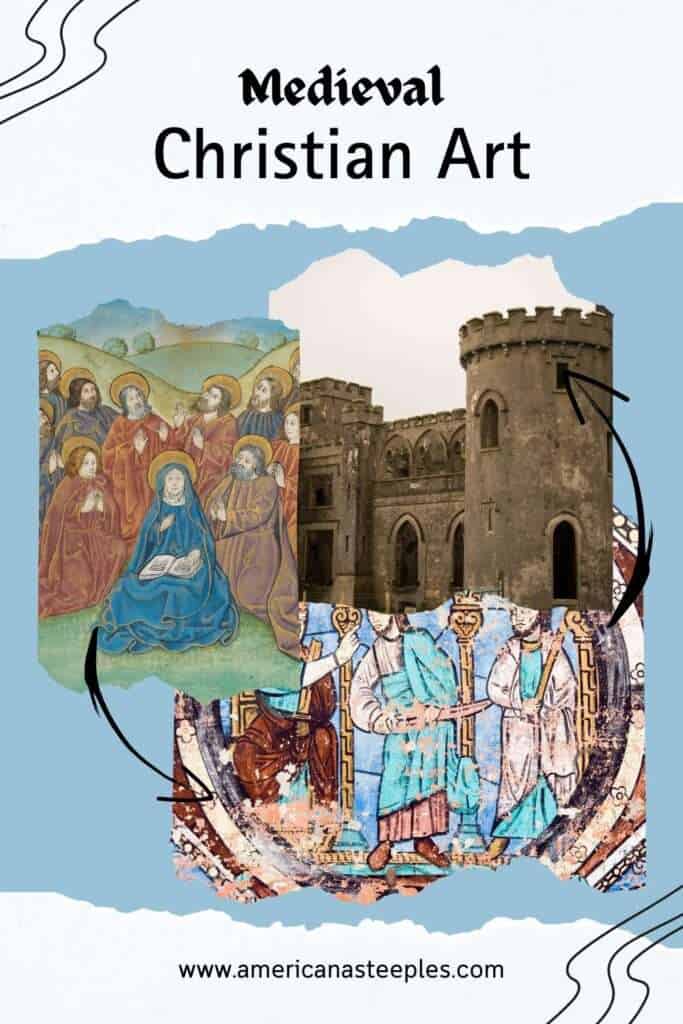
FAQs
What is the difference between Romanesque and Gothic art?
Romanesque art, characterized by its robust and rounded architecture, was prevalent from the 10th to the 12th centuries. Gothic art, which emerged in the 12th century, is known for its soaring arches and intricate details.
How did the Church influence medieval Christian art?
The Church was a major patron of the arts during the Middle Ages. It commissioned works of art for worship and education, shaping the themes and styles of the period.
What are some examples of medieval Christian art that I can still see today?
Notable examples include the stained-glass windows of Chartres Cathedral, the mosaics in the Basilica of San Vitale, and the illuminated manuscripts of the Book of Kells.
Why was symbolism so important in medieval Christian art?
Symbolism allowed artists to visually convey complex religious narratives and ideas. It also served as a visual language that all could understand, regardless of literacy level.
How did medieval Christian art change over time?
Medieval Christian art evolved in response to social, political, and religious changes. It moved from the symbolic and abstract designs of the early Christian period to the more naturalistic and humanistic styles of the Gothic era.
Final Thoughts
Our journey through the world of medieval Christian art has taken us from the fall of the Roman Empire to the soaring heights of Gothic cathedrals. We’ve seen how art served as a tool for worship and education and how it evolved in response to changing times.
The legacy of medieval Christian art is a testament to the enduring power of creativity and faith. Its influence can be seen in the art and architecture of today, a reminder of a time when artists were the storytellers of their communities and cathedrals were the heart of society.
References
[1] Allen, J. R. (2016). Early Christian Symbolism in Great Britain and Ireland Before the Thirteenth Century. United Kingdom: Cambridge University Press.
[2] Bayet, C. (2009). Byzantine art. Parkstone International.

Teresa Trumbly Lamsam, Ph.D., is an accomplished Social Scientist and Journalist. Passionate about establishing credibility in the digital realm, she champions transparent and trustworthy online content. She is dedicated to producing content that sparks curiosity and nourishes the heart and mind.

